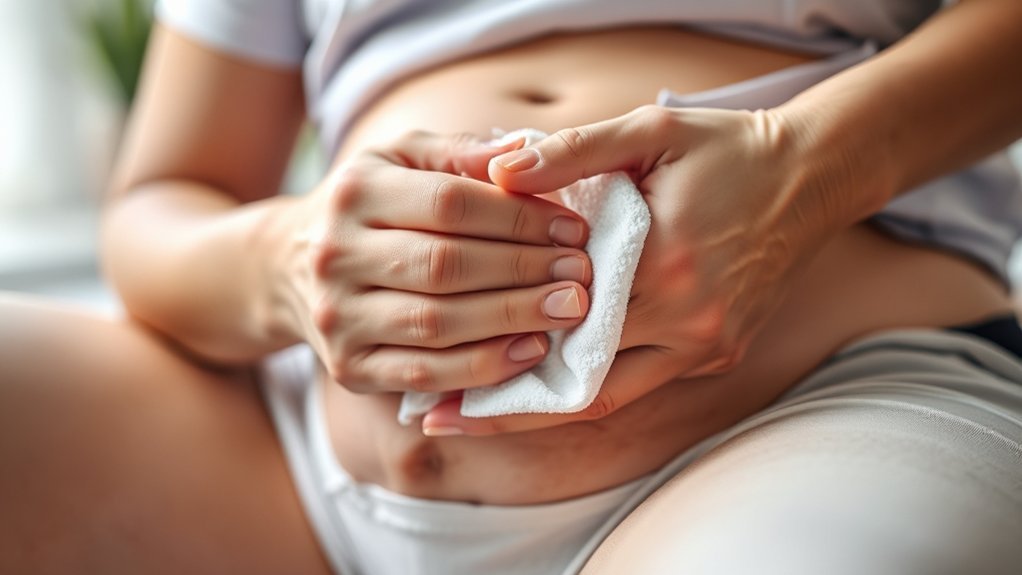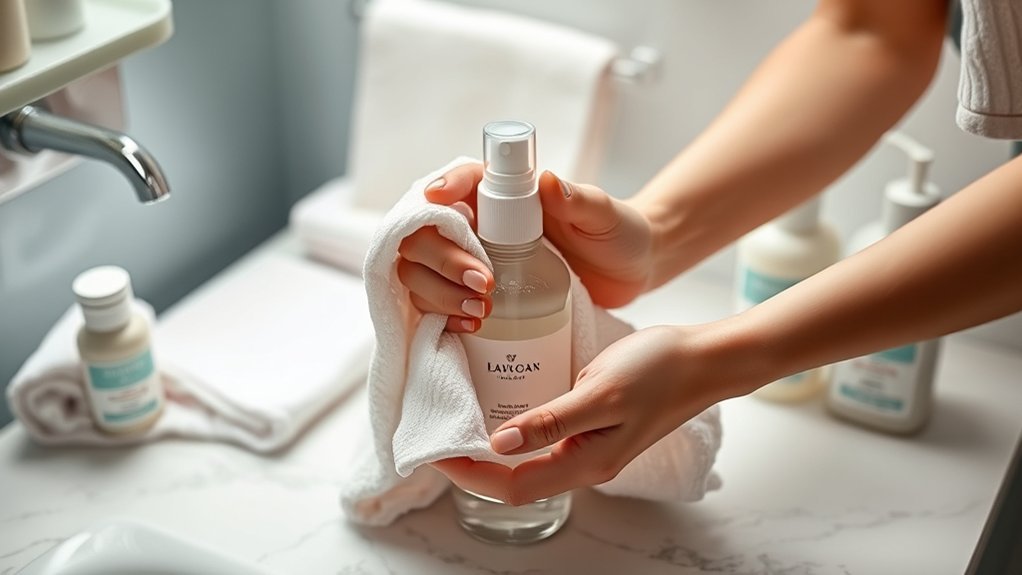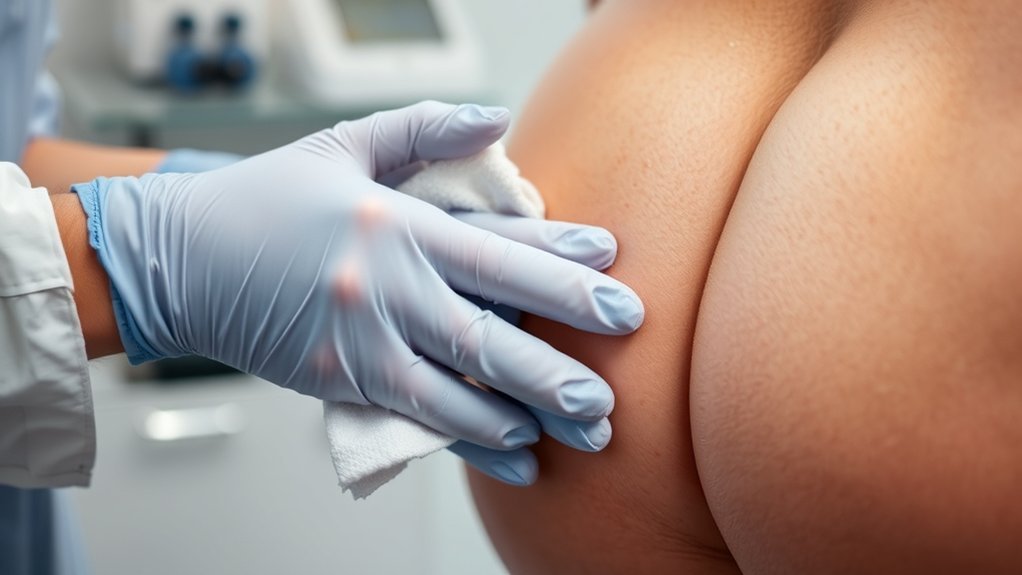Perineal care is essential for your hygiene and overall health, especially after childbirth. It’s important to know the do’s and don’ts to prevent irritation or infections. You’ll want to adopt effective techniques while avoiding common mistakes. Understanding the right products and when to seek medical advice can make a significant difference in your recovery. Let’s explore these critical aspects to guarantee you’re well-informed and comfortable during your healing process.
Importance of Perineal Care
Perineal care is essential not only for maintaining hygiene but also for preventing infections that can arise in areas susceptible to bacteria from urine and fecal matter. This routine is an important part of overall health, particularly in reducing the risk of urinary tract infections (UTIs) and skin irritations.
For postpartum individuals, clean perineal care is critical for healing lacerations, abrasions, or episiotomies, as neglect can lead to infection and prolonged recovery. Studies show that frequent perineal care—ideally every 1-4 hours—significantly enhances comfort and minimizes complications.
Key Do’s for Effective Perineal Care
To guarantee effective perineal care, you should focus on maintaining proper hygiene and using gentle cleansing techniques.
Always clean from front to back, and make certain to dry the area thoroughly afterward.
It’s also important to monitor for any signs of irritation or infection, so you can address concerns promptly.
Maintain Proper Hygiene
Maintaining proper hygiene in the perineal area is essential, especially for individuals experiencing incontinence or postpartum changes.
Perform perineal care daily, increasing frequency if there’s diarrhea or bleeding to minimize infection risk. Always clean from front to back, particularly for female patients, to prevent bacterial spread.
Use warm water and a clean washcloth or disposable wipes for each cleaning motion, ensuring you switch cloths for different areas to maintain cleanliness.
After cleaning, thoroughly dry the area to avoid moisture-related issues that could lead to infections or skin irritation.
Regularly check for signs of irritation, infection, or any abnormal changes in the area, and report any concerns to your healthcare provider immediately.
Use Gentle Cleansing Techniques
When caring for the perineal area, using gentle cleansing techniques is essential to guarantee comfort and prevent irritation. Follow these key practices every day:
- Clean from front to back: This helps prevent the spread of bacteria from the rectum to the urethra, considerably reducing the risk of urinary tract infections (UTIs).
- Use warm water and a gentle cleanser: Opt for a gentle, unscented wipe or washcloth to minimize skin irritation and enhance comfort during the cleaning process.
- Apply light pressure: Clean sensitive areas with care, using a fresh cloth or a new section of a washcloth for each motion to maintain hygiene and prevent cross-contamination.
Monitor for Irritation
Caring for the perineal area goes beyond gentle cleansing; it also involves vigilant monitoring for signs of irritation. Regularly inspect the area for any redness, swelling, or lesions. These signs can indicate potential issues that, if caught early, may prevent infection. Use gentle, non-irritating products to keep the area clean and guarantee thorough drying after cleansing to avoid moisture accumulation.
| Signs of Irritation | Recommended Actions |
|---|---|
| Redness | Adjust cleansing technique |
| Swelling | Consult healthcare provider |
| Lesions | Switch to gentler products |
Encourage open communication about discomfort or irritation to guarantee timely interventions. Remember, maintaining skin integrity is essential for effective perineal care.
Common Don’ts to Avoid During Perineal Care
To guarantee effective perineal care, it’s crucial to avoid several common pitfalls that can compromise hygiene and patient comfort.
Effective perineal care hinges on avoiding common mistakes that jeopardize hygiene and patient comfort.
Here are three critical don’ts to keep in mind:
- Don’t use soap and water in a basin. This practice can lead to contamination, increasing the risk of infection, especially when dealing with sensitive private areas or a urinary catheter.
- Don’t rush the cleaning process. Take your time to thoroughly cleanse the area, ensuring both hygiene and comfort, particularly if there’s vaginal bleeding.
- Don’t neglect glove changes. Always change gloves after cleaning the rectum before attending to the urinary catheter to prevent bacteria spread.
Techniques for Proper Perineal Hygiene

When performing perineal hygiene, it’s essential to follow the proper cleaning order and technique to minimize infection risks.
Always clean from front to back, using a fresh washcloth or disposable wipe for each motion.
Prioritizing comfort and dignity will enhance the experience, ensuring the patient feels respected and involved in their care.
Cleaning Order and Technique
Ensuring proper perineal hygiene is essential for preventing infections and promoting comfort. Follow this cleaning order to maintain hygiene:
- For female patients: Start at the inner thighs, gently separate the labia, and wipe from front to back towards the anus, using a new wipe for each stroke.
- For male patients: Clean the shaft of the penis from the tip to the base. If uncircumcised, retract the foreskin before cleaning.
- After genital cleaning: Turn the patient on their side to clean the anal area with a fresh cloth, checking for signs of irritation or infection.
Always change gloves between cleaning the rectum and genital areas to reduce the risk of cross-contamination and maintain hygiene.
Infection Prevention Strategies
Proper perineal hygiene is essential for preventing infections, especially in vulnerable populations.
To effectively implement infection prevention strategies, always clean the perineal area from front to back. This technique prevents harmful bacteria from migrating from the rectum to the urethra, reducing the risk of urinary tract infections.
Use warm water along with disposable wipes or prepackaged cleansing cloths specifically designed for perineal care to minimize contamination.
Every caregiver needs to change gloves after cleaning the rectal area before touching any other body part or urinary catheter to prevent cross-contamination.
Regularly inspect the area for signs of infection like redness or unusual discharge, and establish a routine for peri-care to maintain hygiene, especially for individuals with incontinence.
Products Recommended for Perineal Care

Perineal care is essential for comfort and healing, especially during the postpartum period. Using the right products can greatly enhance your recovery experience. Here are three recommended items:
- Pre-moistened cleansing wipes: These minimize the risk of contamination and infection compared to traditional soap and water methods, making peri care safer and more convenient.
- Witch hazel pads: Tucks pads infused with witch hazel can effectively treat swelling and discomfort associated with hemorrhoids and perineal healing.
- Specialized postpartum underwear: Opt for high-waisted, soft fabric options like those from Bodily, which provide comfort and support while protecting your bed linens during recovery.
Incorporating these products can help promote healing and enhance your overall well-being. Additionally, maternal health fact sheets are available to provide further guidance on postpartum care and recovery strategies.
When to Seek Professional Help
How can you tell when it’s time to seek professional help during your recovery? Recognizing symptoms can lead to timely intervention and prevent complications. Here’s a quick reference:
| Symptoms | When to Seek Help |
|---|---|
| Heavy vaginal bleeding | Soaking a pad in an hour or less for 2 hours |
| Signs of infection | Fever, increased pain, swelling, or foul discharge |
| Fast/irregular heartbeat | Accompanied by dizziness or extreme fatigue |
| Worsening perineal discomfort | Persistent despite following care recommendations |
Ignoring these conditions if not recognized can lead to serious health issues. Remember, appropriate care reduces risks, ensuring a smoother recovery. Don’t hesitate to consult your clinician for any concerns.
Frequently Asked Questions
Should Perineum Be Washed Every Day?
Yes, you should wash your perineum daily to maintain hygiene and prevent infections. Using warm water and gentle cleansing methods is essential to avoid irritation, especially after bowel movements or in cases of incontinence.
How to Do Proper Perineal Care?
Imagine tending a delicate garden; start by washing your hands and wearing gloves. Clean gently from front to back, dry thoroughly, and check for any signs of distress to nurture health and comfort.
What Should I Avoid After a Perineal Tear?
You should avoid tampons, strenuous activities, bubble baths, and scented soaps. Don’t sit on hard surfaces for long and delay sexual intercourse until your clinician clears you to guarantee ideal healing and prevent complications.
What Must Be on the Bed When Performing Perineal Care?
When performing perineal care, guarantee a waterproof bed pad is under the client, clean washcloths or wipes are ready, and have paper towels for cleanup nearby. This keeps the environment hygienic and the client comfortable.
Conclusion
To summarize, maintaining proper perineal care is essential for your health and comfort. By following the do’s and avoiding the don’ts, you can greatly reduce the risk of infections and promote healing. But remember, if you notice any unusual symptoms or persistent discomfort, don’t hesitate to seek professional help. Your wellbeing is paramount, and addressing potential issues early could make all the difference. So, stay vigilant and prioritize your perineal hygiene—you deserve it.
